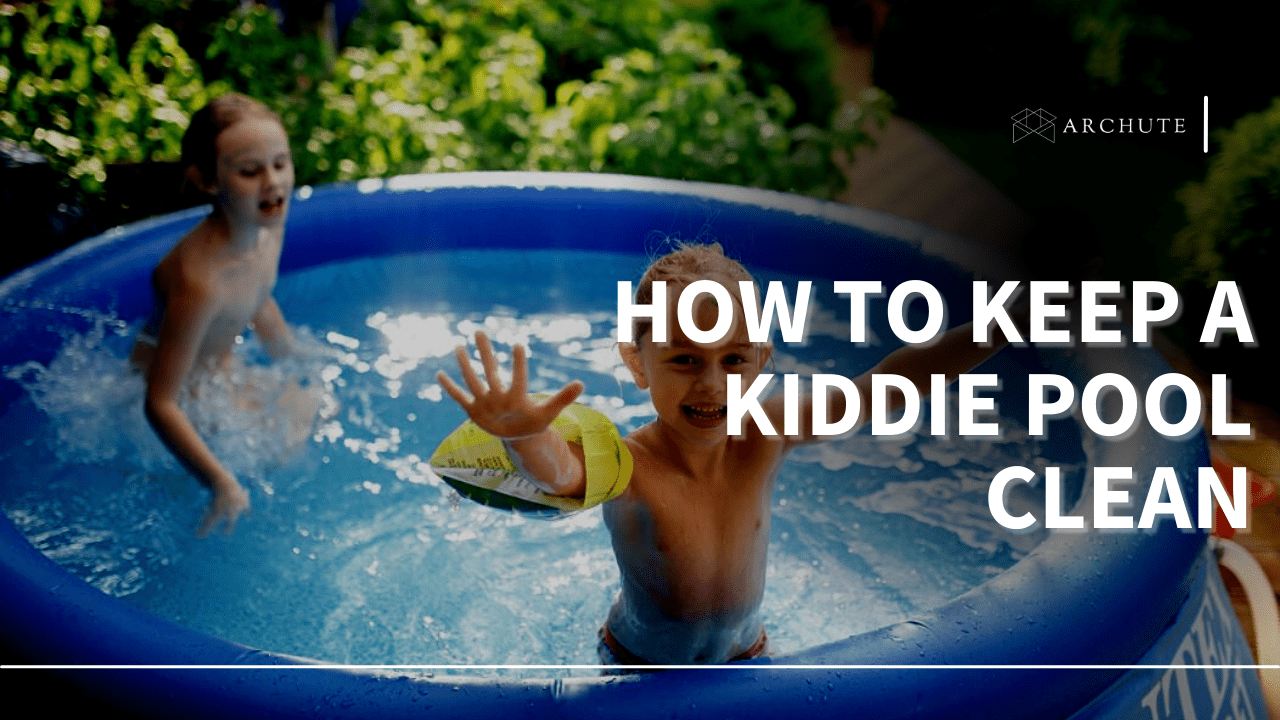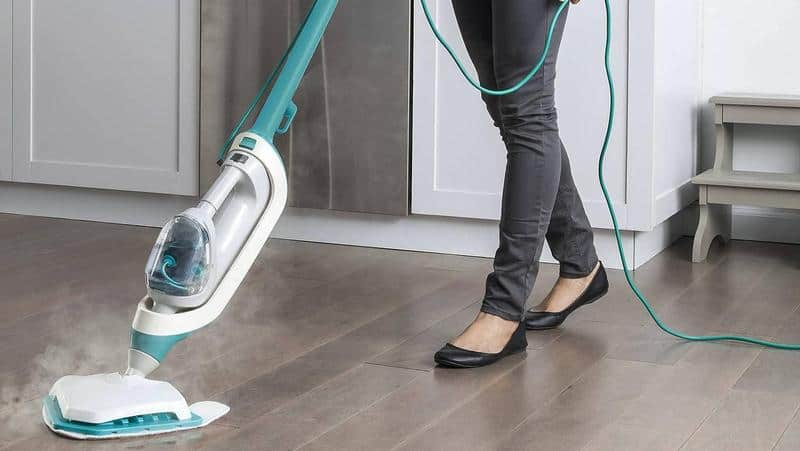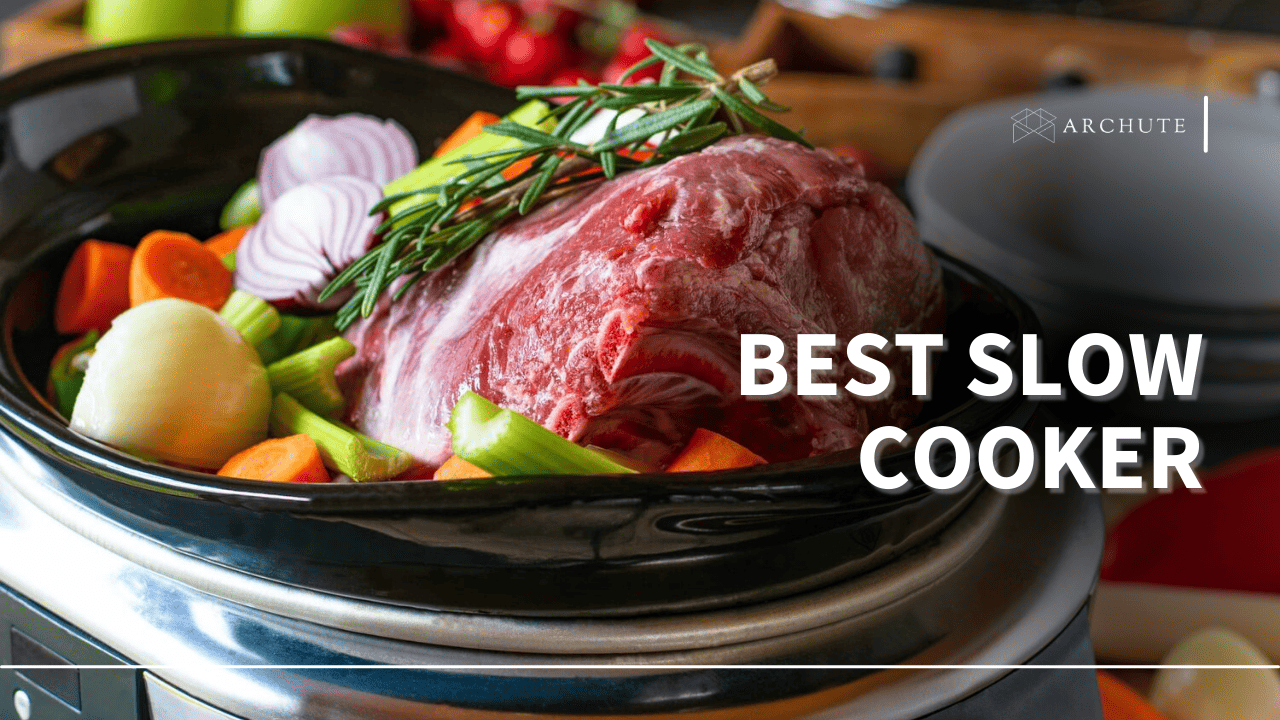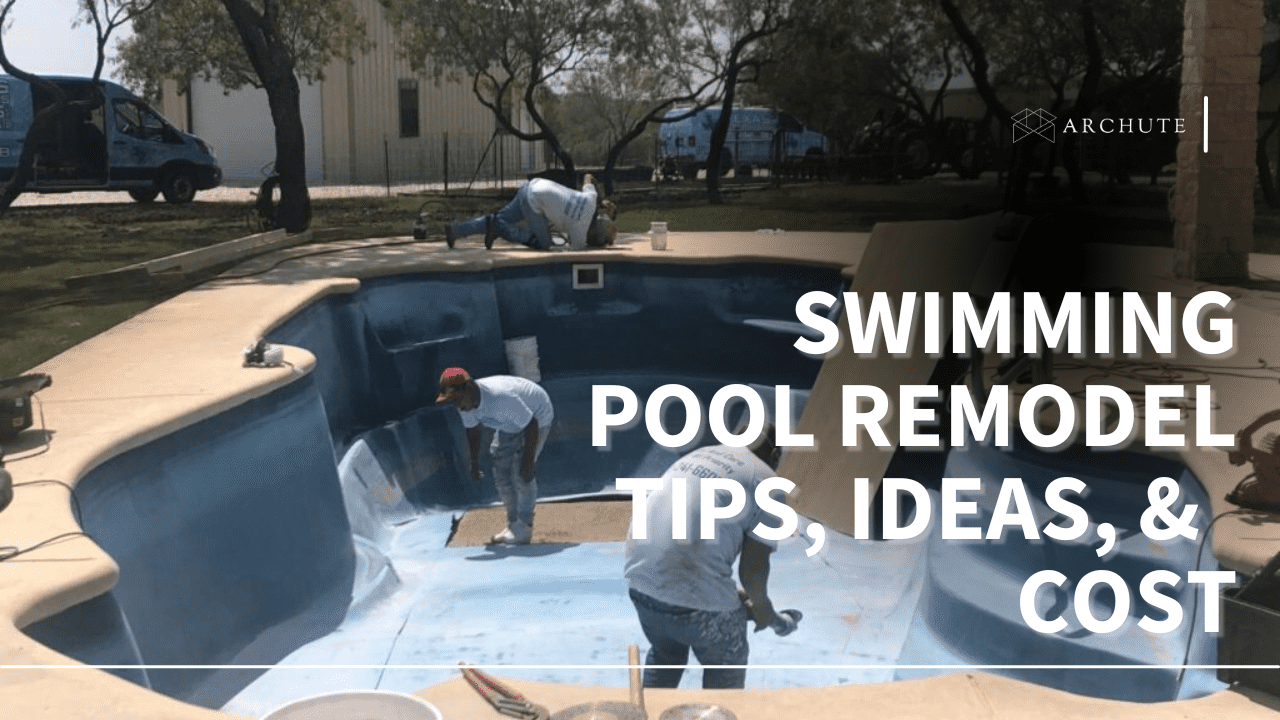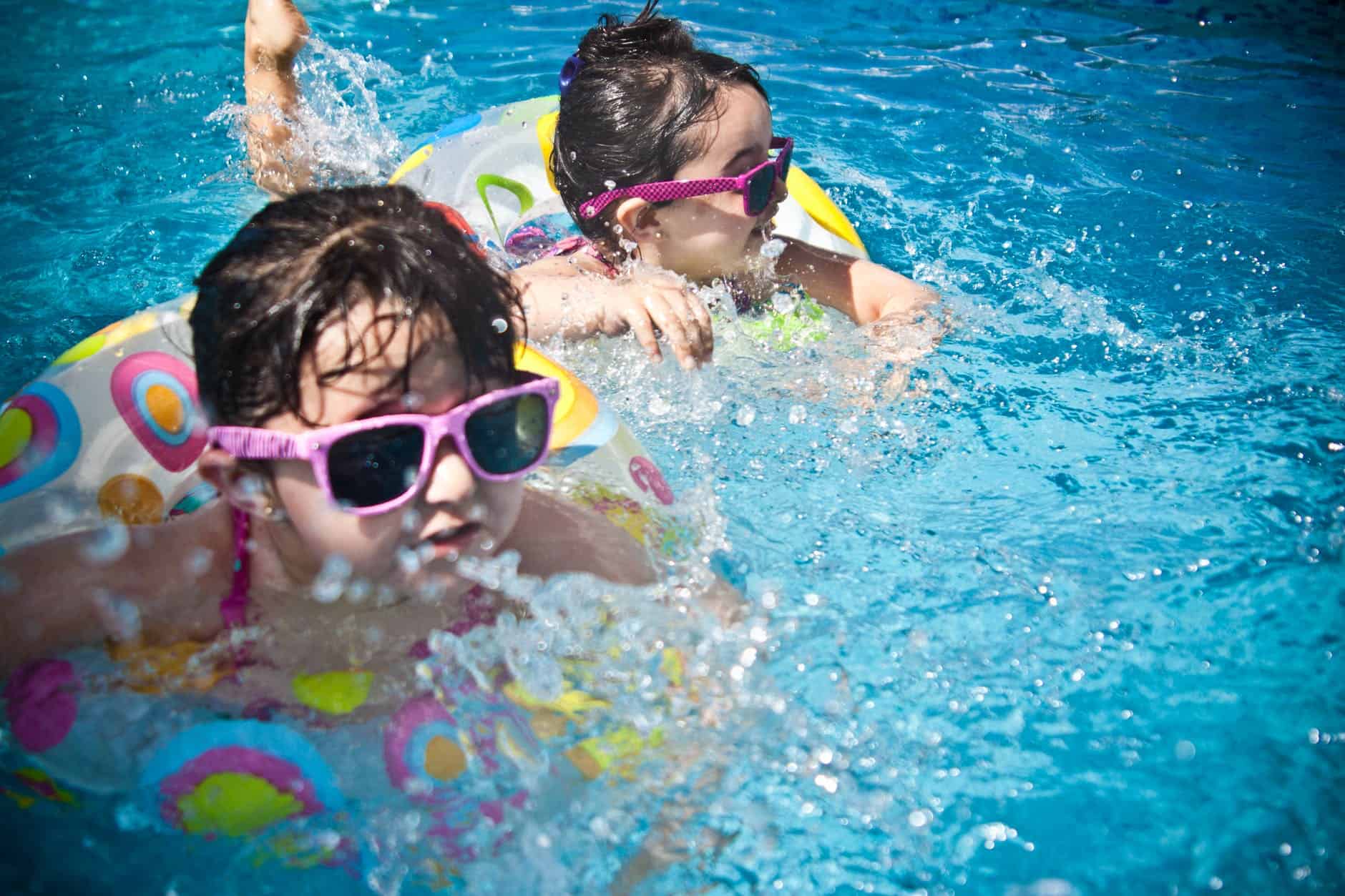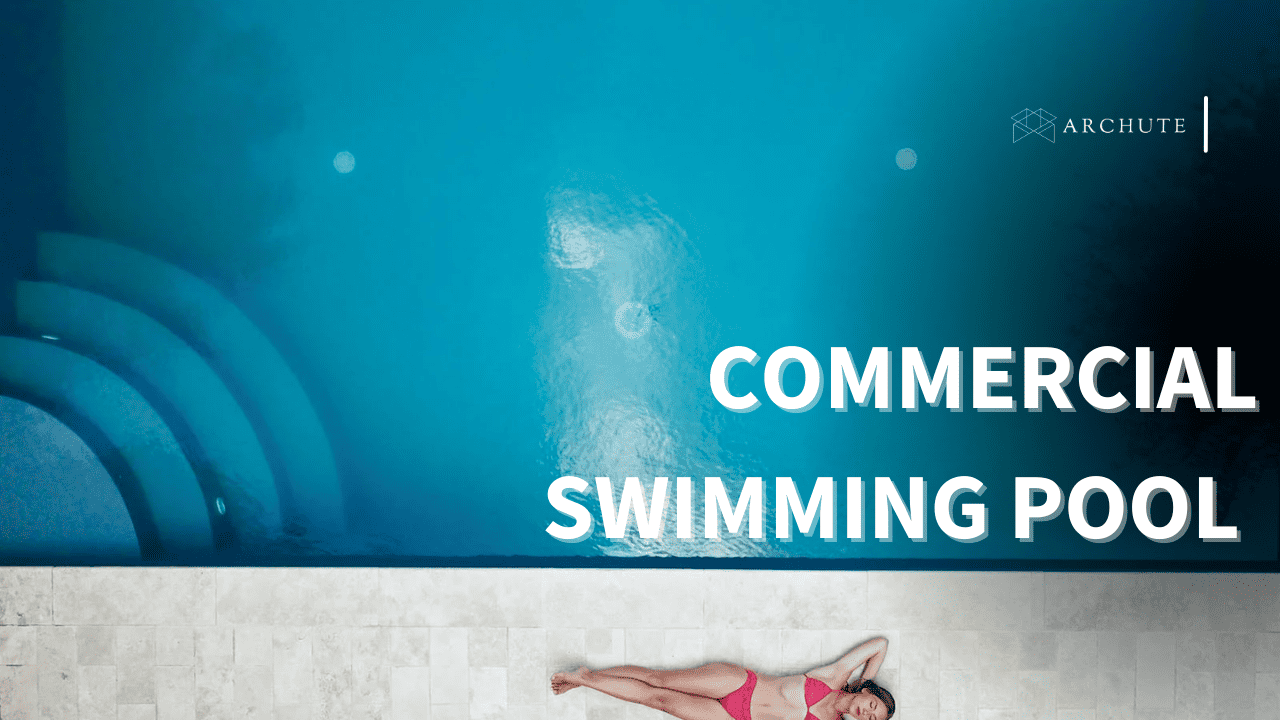It’s summer, and your kids just can’t wait to get that much-needed dip into the water. Splashing around in the water can be a fun and entertaining way to keep kids busy while adults get their free time. Still, it is vital to know that after the swimming session, the pool needs to be cleaned.
For people with smaller backyards, above-ground pools, such as kiddie pools, are the best solution. Your kids could splash around while you work or take a nap you deserve, which is why we have prepared this list of surefire tips to clean your kiddie pool to save you time and energy. We’ve got you.
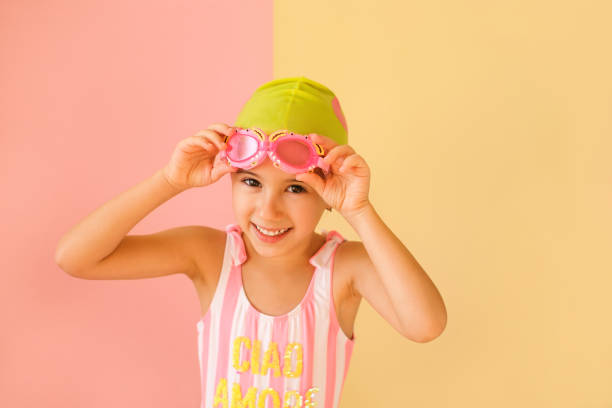
Image Credits: pixabay.com
1) Drain and Refill the Pool Daily or Before Use
Your kiddie pool should be drained after each and every use, even if it is used for just a few minutes. We recommend that you drain and refill your pool (with clean, fresh water) before every use. Since kiddie pools are relatively small, using a pool filter pump may not be quite necessary.
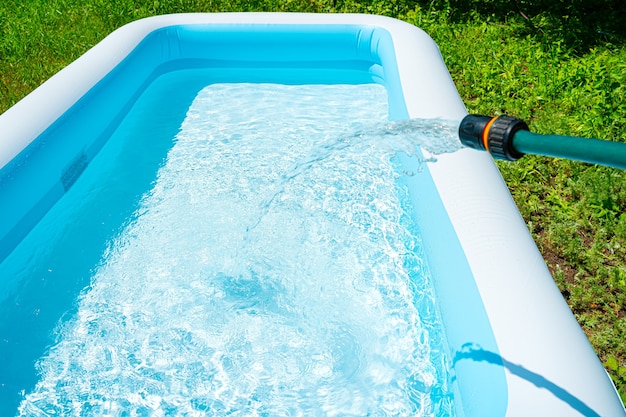
Image Credits: freepik.com
If the pool will not be used, it would rather remain empty than allow stagnant water to collect. Without chlorine, stagnant water can be unhealthy within less than 48 hours. Stagnant water is a breeding ground for mosquitoes and algae, which are not a great sight to behold.
Draining your kiddie pool is also a safety hazard; your toddlers won’t run into the risk of falling and drowning in these above-ground pools. You can chill poolside on the deck, while your kids splash around in the above-ground pool. Awesome, right?
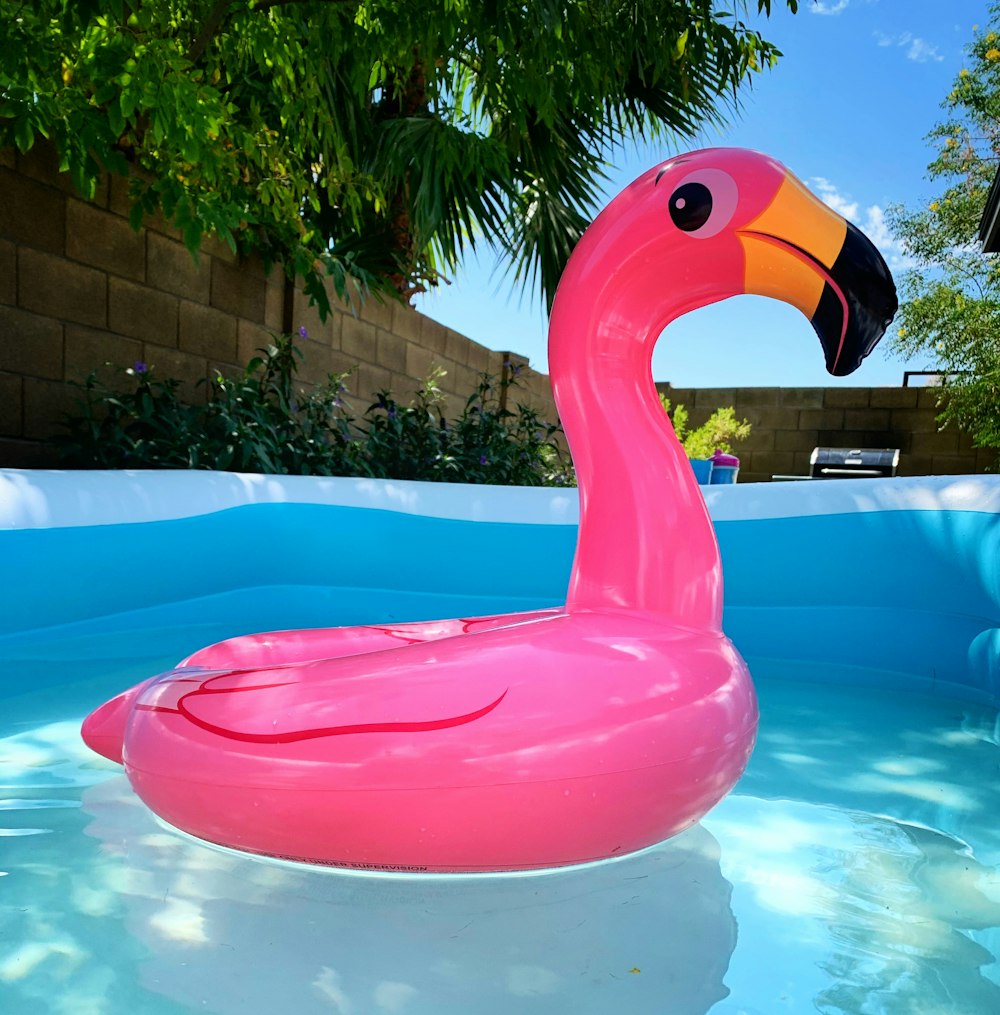
Image Credits: unsplash.com
Use a garden hose to drain the water. Ensure you have removed any debris from the water before draining, as it could block the draining end. You can use the same process with a drain plug; ensure you’ve removed all debris first.
Always ensure you are able to see the bottom of the kiddie pool at all instances of the swim session. If you feel that the water has become too cloudy or dirty, it’s probably time to drain and refill the water.
2) Use a Kiddie Pool Cover
Remember, the golden piece of advice you should take into serious consideration is that the kiddie pool should be drained after and refilled before each use.With this in mind then, there will be no need for a kiddie pool cover since the pool water will not be left unattended for extended periods.

Image Credits: frabco.com
However, in between swim sessions, you should use a pool tarp or safety pool cover to keep kiddie pool water clean. If you have a small pool, you can use any available cloth to keep the pool covered.
Even fancier, you can use a transparent roof inflatable structure; this way, you can watch your kids swim while protecting them in a sterile bubble. Some kiddie pools come with canopies or umbrellas that are UV-resistant. You may attach the cover to the pool pole; however, this will just prevent debris such as leaves, and not dust.
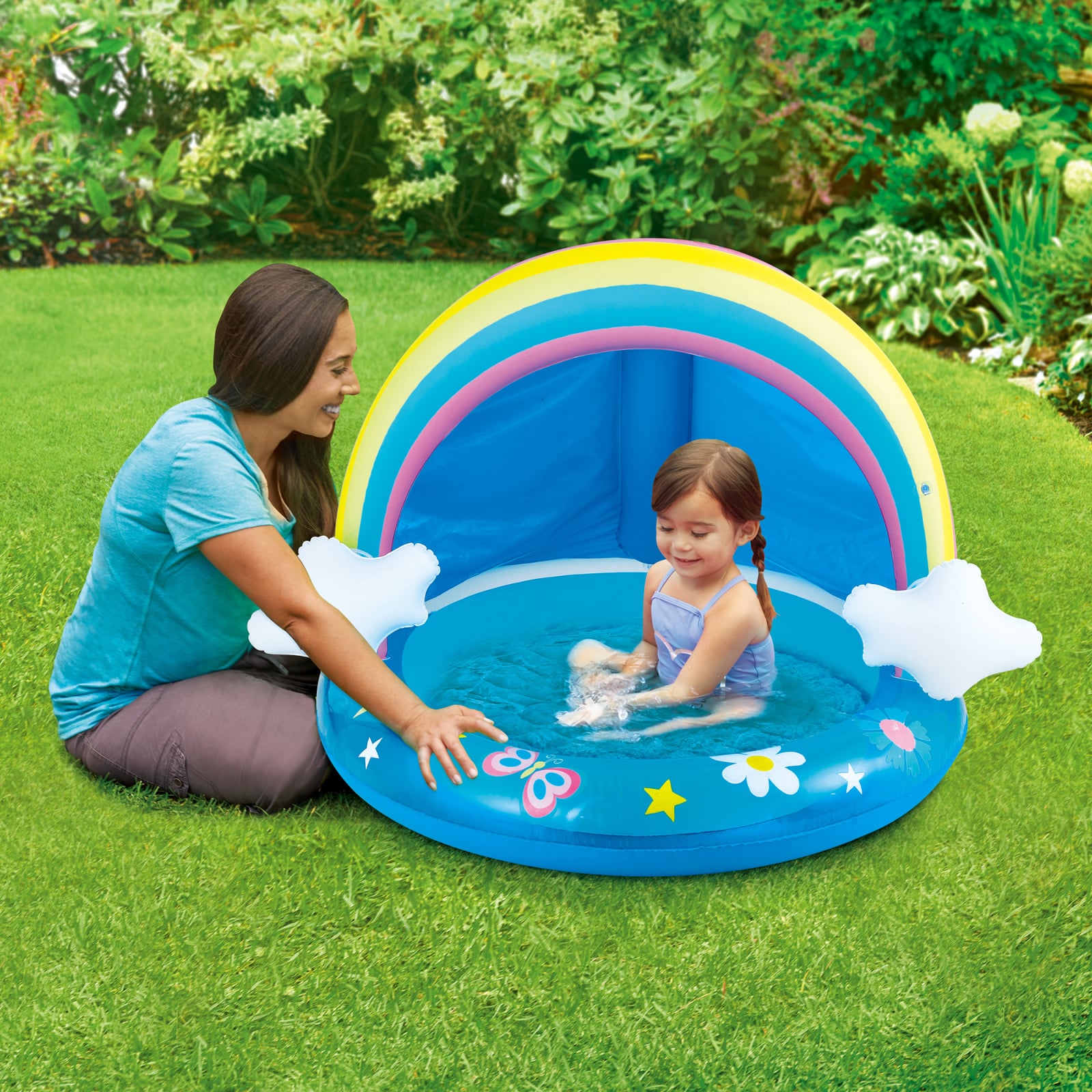
Image Credits: popsugaruk.com
3) Sanitize with Chlorine
Contrary to popular belief, it is safe to put a little chlorine bleach into the kid’s pool water to treat it. You just need to be extra careful. A little household bleach goes a long way. Clorox has a chart showing how much bleach you should put in depending on the pool’s size. Putting too much may cause skin irritations.

Image Credits: nytimes.com
Check the pool’s pH levels at least three times a week using test strips if the pool is left outside. However, it is recommended that you should refresh your pool with fresh water any time chlorine dissipates and you want to up its levels.
Chlorine and muriatic acid are used to reduce pH levels, while baking soda and soda ash will see pH levels rise. The optimal pH range is between 7.4-7.6.
Standard liquid bleach is non-stabilized. If you want to make its effects last longer in the pool and maintain a consistent chlorine level, consider adding a stabilizer. Wear gloves to prevent irritation from pool chemicals.
Tip: Do not toss chlorine tablets directly into inflatable pools. Dilute them in a bucket of water before adding them to the pool water.

Image Credits: mybackyardlife.com
For the kids’ safety, use pool chemicals formulated for small pools. A typical kiddie pool holds about 30 to 25o gallons of water. A regular pool that’s 32 by 16 by 4 feet in dimensions will hold 15,360 gallons. Check the inflatable pool’s dimensions, and compare the figures with the instructions specified on the chlorine tabs before using.
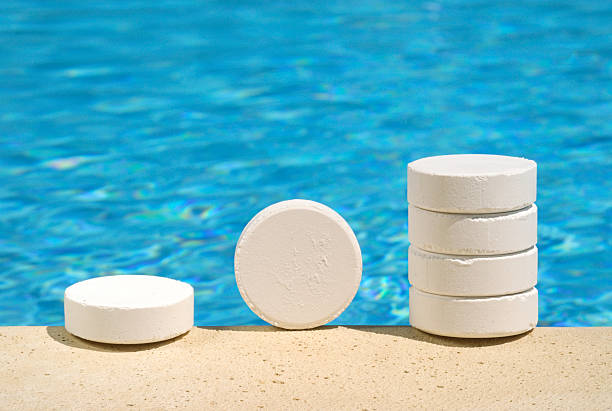
Image Credits: pixabay.com
You can also use a floating chlorinator, also called a chlorine floater, to ensure your pool stays sanitized, in case the kids vomit or pee inside the pool. This device will always naturally rise to the surface so you can see it at all times. You can also use just half a cup of white vinegar to sanitize the pool if a kid pukes.

Image Credits: pinterest.com
Use a chlorine test kit to ensure that the chlorine levels are between 1-3 ppm (parts per million). If ppm is above 4, do not allow your kids into the pool. For a full-sized pool, the allowable ppm could go higher, up to 10 ppm.
In case the chlorine levels are too high, drain the pool and restart the chlorination process with fresh water. You can purchase chlorine test kits from local supply stores.
4) Collect Debris from the Water
When the kids take a break from swimming, leaves may find their way to the pool. Use a pool skimmer or fine mesh net to manually collect leaves and other debris from the pool. You can also remove the debris by hand if they are not much. Put the collected debris in a plastic bag and dispose of it.
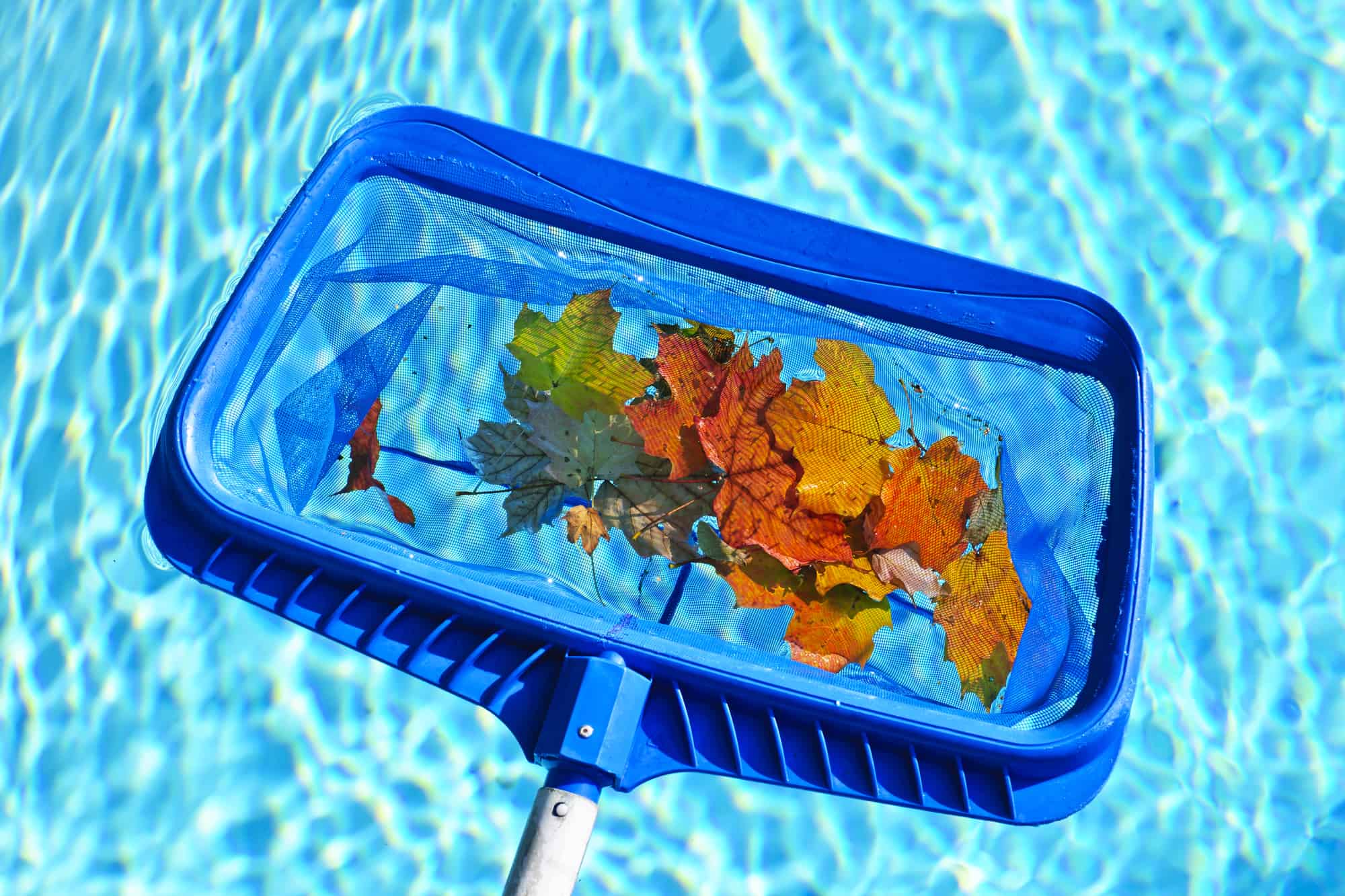
Image Credits: poolcareguy.com
On days when you carry your kiddie pool to the beach and sand sediments find their way to the pool floor, you can use a handheld vacuum cleaner to suck them up. Modern automatic pool cleaners are self-contained and come with a pool filter. They also collect this dirt and store it within themselves so that you dispose of it easily.

Image Credits:polarispool.com
An ingenious trick is to set up your baby pool a distance away from trees where leaves could fall. It will make your cleanup process faster.
This is why it is important to always cover your kiddie pool when not in use. Accumulated dirt may be difficult to clean. Furthermore, you might not always be in the mood to clean, so in this case, prevention is better than cure.
5) Scrub with Warm Soapy Water
Image Credits: backyardchickens.com
Use gentle dish soap and warm water to scrub your small kiddie pool floor. It is a great idea to wear gloves. After this, let the kids’ pool dry completely in direct sunlight for a few hours.
Drying stops mold and mildew from growing since they thrive on dark and damp surfaces. Baking soda and borax also naturally kill bacteria and algae.
You can use your pool vacuum at least once a week to remove stubborn stains or debris from the pool floor. Scrub the pool’s walls with a stiff scrub brush to remove dirt that may have attached itself. A pool vacuum will get to those corners that the brush won’t.
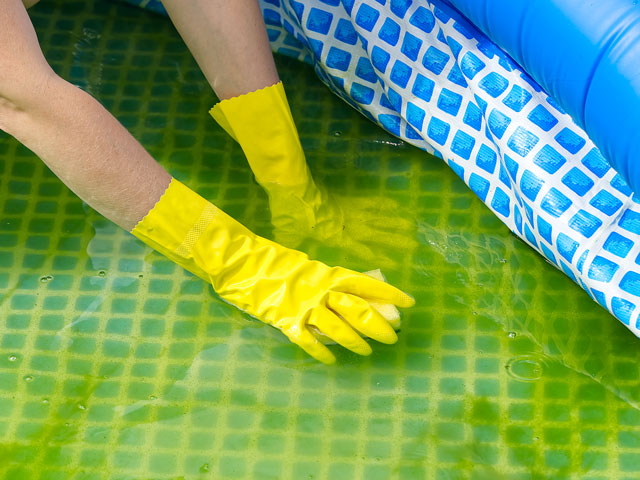
Image Credits: bumpnbounce.com
Most people forget to wash the walls and primarily focus on the floor. Don’t make that mistake, as it could be a breeding ground for pathogens.
Do not scrub too hard, as this could create holes in the vinyl or plastic material. These holes act as air leaks that could render your entire kiddie pool or inflatable pool useless.
If not taken care of properly, kiddie pools may get slimy and disgusting. They may cause more slip-and-fall accidents. Therefore, it is paramount to ensure the pool is immaculate before your kids’ swim session.

Image Credits: pixabay.com
Clean the inflatable using a damp cloth after a swim session if you find it to be not dirty or slimy. Use your judgment. Of course, there is no need of washing a small inflatable pool daily.
6) Have Kids Shower and Wipe Their Feet Before Getting in
Showering before swimming helps maintain overall pool hygiene. It helps wash away traces of urine, fecal matter, perspiration, dirt, and cosmetics. Kids are sensitive and may be affected by the simplest of pathogens so it’s wise to be extra careful.
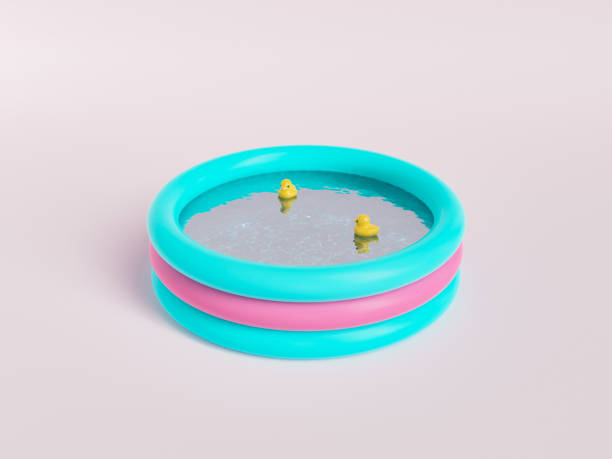
Image Credits: pixabay.com
Having them wipe their feet before getting in will also prevent accumulated dirt on their feet (from walking barefoot) from finding its way to the pool. This is why it’s imperative to keep the surrounding areas clean.
Allowing such pathogens in the pool could lead to eye and skin irritations. Further, when these impurities mix with the chlorine used in the pool, it reduces its pH levels, making it unsuitable as a disinfectant.
In fact, it is advised to take kids on frequent bathroom breaks. Ask them if they’d want to use the bathroom after short intervals to avoid them making messes in the pool. Keep any kids who are feeling unwell out of the pool to decrease the risk of passing on the illness to other kids.
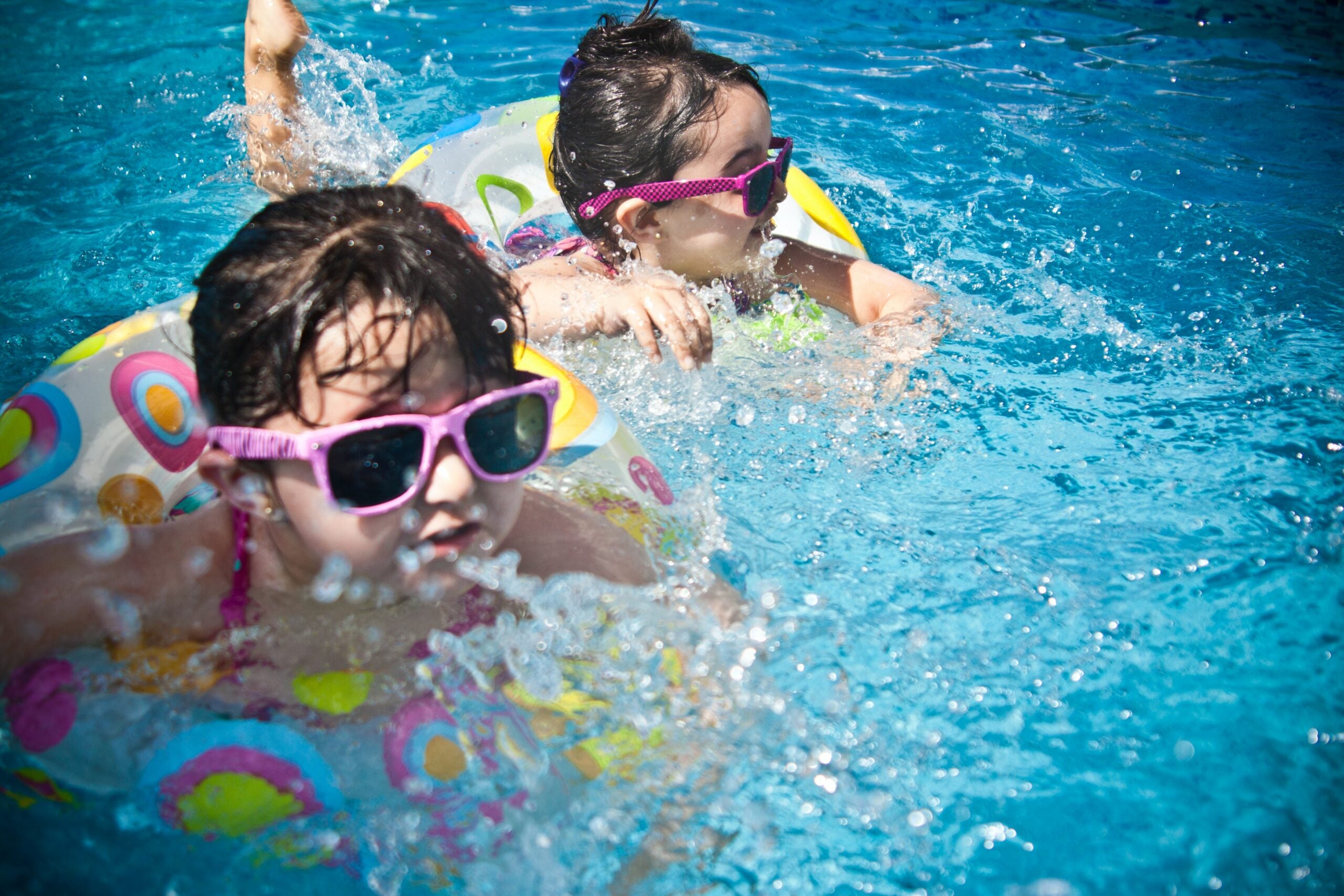
Image Credits: popularscience.com
Tip: Use a swim diaper for any toddler who wants to enter the kiddie pool.
Alternatively, you could install foam tiles under the inflatable kiddie pool. Foam tiles act as secure support for the above-ground pool. Your kids could also wipe their feet on the foamy mat before getting into the pool. Also, they will help break the fall in case of slip and fall accidents.
7) Absorb Sweat and Sunscreen Oils
We all know how brutal the summer heat may get, sometimes. As such, it is important to protect our kids when they are outdoors. However, since sunscreen oils come off when in contact with water, here are a few suggestions to kill these two birds with one stone:
- Apply sunscreen to every part of their body (even underneath bathing suits) at least 15 minutes before a swim so that it absorbs.
- Apply sunscreen after the swim.
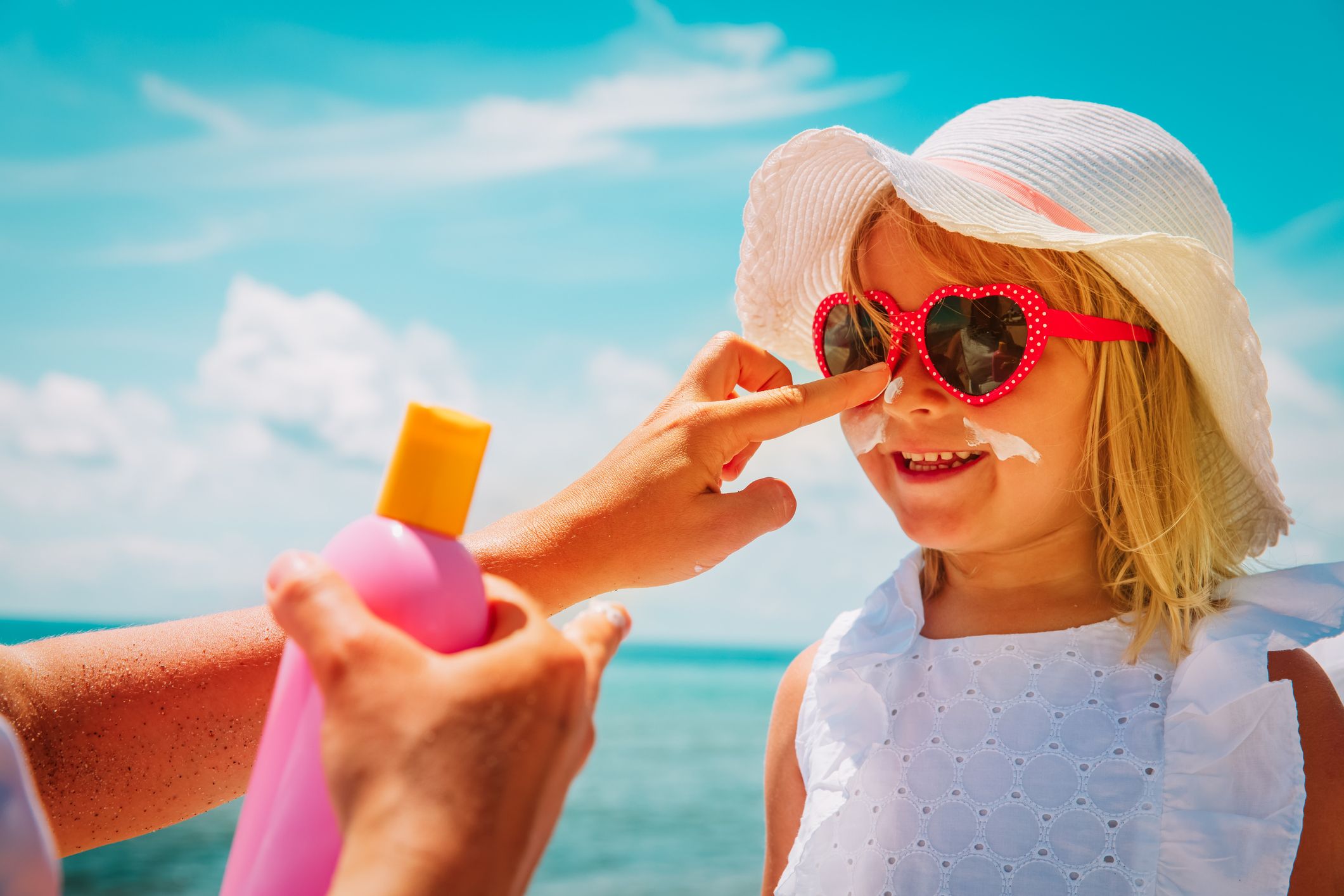
Image Credits: prevention.com
If you have a bigger-size pool or are hosting more kids, use a quality enzyme additive in the pool water. It breaks down these oils into their most basic forms, thereby allowing them to flow through the drain.
Further, you can use oil-absorbing sponges to absorb sunscreen oils and lotions left after swims. This helps to eliminate the unsettling cloudy water caused by such impurities.
Why Keeping a Kiddie Pool Clean is Important
1) Dirt Acts As Impurities to the Sanitizer
Chlorine will identify dirt as impurities, and therefore slow down the sanitation process. So if your chlorine levels were to last the pool say, five hours, other chemicals will decrease this time rapidly to say, 3 hours.
This will automatically mean that dirty pools will require more sanitizer or increased checking of pH. Your kids will be at risk of falling sick if the sanitizer is neutralized way early on.

Image Credits: unsplash.com
2) Defense Against Contaminants
Imagine if corrosive metals got lost somewhere in the inflatable kiddie pool and are not cleaned out. They possess toxic contaminants such as Zinc or Copper that may irritate your kids’ skin.
Further, if your kids swallow this water, these contaminants will affect their internal organs. Be on the lookout for metallic objects or toys left by kids after a swim.
3) Protection Against Recreational Water Illnesses
Not letting kids who have suffered from diarrhea recently, or are still suffering from it is not an option if you want to protect the other kids. Find a polite way to do so.

Image Credits: lifesavvy.com
Viral gastroenteritis is highly contagious and can be spread by contact with the fecal matter of an infected person.
Further, debris left in the pool may cause skin, eye, and ear irritations. Kids’ skin is very sensitive and may be affected by the flimsiest of germs. Also, these impurities may react with chlorine sanitizers to indirectly cause harm to your kids.
Your Summer Just Got Better
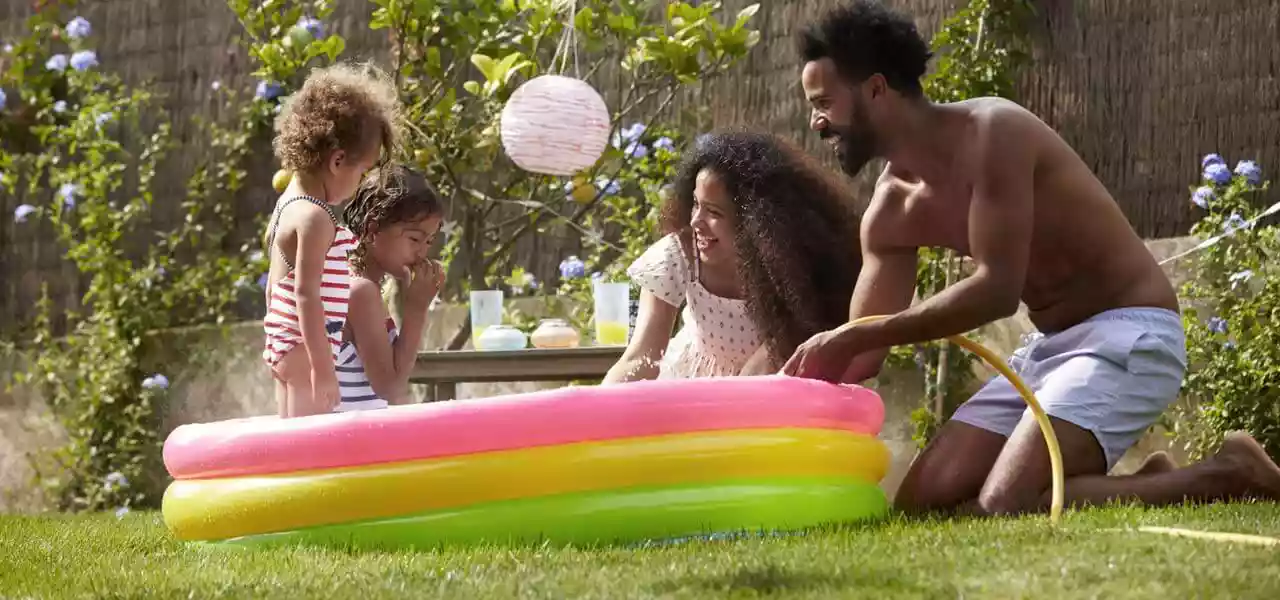
Image Credits: intheswimpoolblog.com
Some kiddie pools will require an air pump. Others hold more gallons of water. Basically, kiddie pools have varying levels of complexity, such as having a built-in waterslide, meaning that cleaning will also vary.
What remains constant is that your kiddie pool will need some cleaning after and before every swimming session. With these cleaning tips and hacks in mind, your kids are sure to enjoy their swims all summer long.
And your summer will be easier and more delightful this time, trust us.
Featured Image Credits: earth911.com

